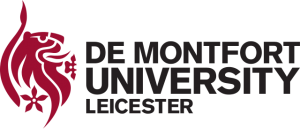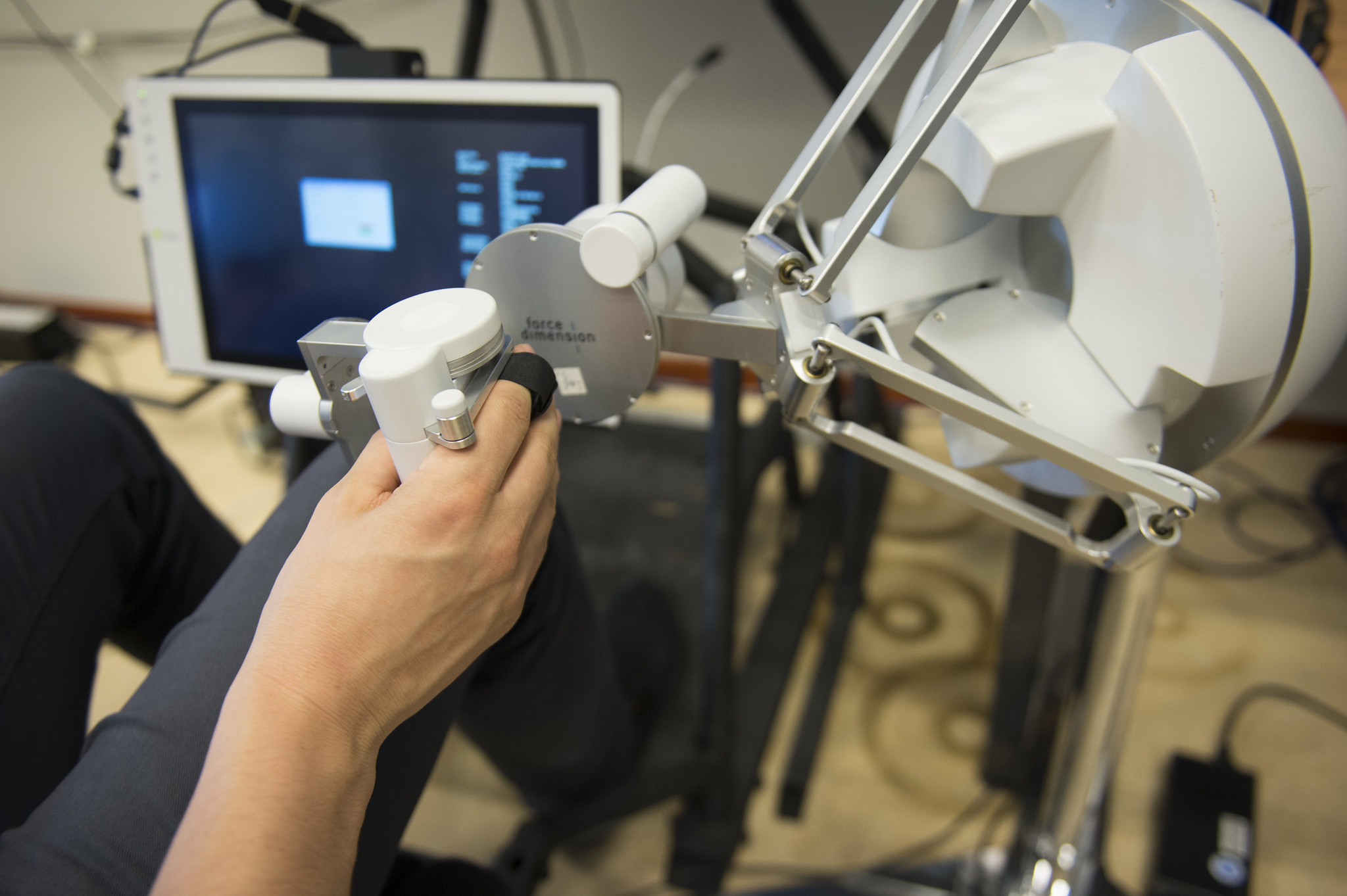

The Unions and Digitalisation Project is a research project funded by the Leverhulme Trust. It is a collaboration between De Montfort and Cardiff Universities and addresses trade union approaches to dealing with digitalisation. The study involves research with trade unionists in four sectors in the UK and Norway. The aim is to ‘co-produce’ research with trade unions that can inform their strategies for dealing with digitalisation and shaping these processes in accordance with workers’ concerns and interests. The research is being undertaken by Professor Jonathan Payne (De Montfort University), Professor Caroline Lloyd (Cardiff University) and Dr. Secki P. Jose (De Montfort University). The project began in February 2021 and ended in June 2023.
Project Summary Report
28 June 2023
A short overview of the project findings
____
Going paperless in hospitals: What role for unions in digitalisation?
26 June 2023
Hospitals in many developed countries face challenges in terms of an ageing population, rising levels of interventions and treatments, and widespread staff shortages, particularly of doctors and nurses. The digitalisation of administrative and clerical work, for example electronic medical records and patient management systems, are often seen as part of the solution and as representing modern healthcare. Claims are made that ‘paperless’ working will be cheaper and more efficient, while providing a better service to patients.
There have been claims that digitalisation will dispense with most of the work of hospital secretaries and clerical workers. However, the history of digitalising medical records is littered with expensive failures, while the role of admin workers is often under-valued and misunderstood. Successful implementation is a complex process and there are reports that those doing the job are rarely involved when change happens (Voss and Rego, 2019[i]). Is there a better way and what can trade unions contribute? A recent report by academics from Cardiff and De Montfort Universities examines the role of unions in Norway and the UK in influencing the processes and outcomes of digitalisation in the hospital sector.
The report is based on findings from a Leverhulme Trust Research Project that involved two unions – Fagforbundet in Norway, and UNISON in the UK. Focusing on administrative and clerical workers, it addresses the following aspects:
- Union organisation and mechanisms for influencing digitalisation
- Union influences on job losses and role changes
- Union resources and support to deal with digitalisation.
Main findings
The general position adopted by Fagforbundet and UNISON is that digitalisation in hospitals can benefit patients, and that there are potentially positive outcomes for workers in removing repetitive and monotonous tasks. However, they argue it is necessary to have union involvement to ensure that workers are not harmed by the changes. The participation of those doing the job is seen as key to embedding the technology successfully and foreseeing and avoiding problems. Union reps report that a wide range of digital changes have already taken taking place in many hospitals that have affected the jobs of medical secretaries, records clerks and receptionists. More are planned, including large-scale integrated digital systems for patient management
In the hospital sectors in Norway and across the UK, there are systems of collective bargaining and consultation at national and workplace level that allow for union involvement in processes of organisational change. However, the law and collective agreements are stronger in Norway, particularly in relation to rights around involvement in technology change. These differences in rights help to explain the greater influence of unions in Norway. Nevertheless, there was considerable variation across Norway and countries in the UK. In England, the research identified patchy involvement, mainly limited to unions being provided with information, alongside consultation over job regrading, redundancy and redeployment.
By contrast, in one case in Scotland, influence was similar to some of the best cases in Norway. In these hospitals, union involvement was at an early stage, and workplace reps explained that participation in project groups had an important influence on how the systems were introduced and the outcomes, both for workers and service delivery. The best examples of the successful introduction of digital systems, while not widespread, were in cases where unions and workers were involved in projects that proceeded slowly, allowing problems found locally to be resolved with the developers, before being expanded to other areas.
Despite expectations, digital automation in hospitals does not appear to be replacing many admin and clerical jobs. Senior management often over-estimate the capability of various technologies to replace workers. Both Fagforbudent and UNISON play a key role in restricting job losses and supporting members that are faced with redeployment. In Norway, most reps reported that adequate training was provided to workers when new digital systems or upgrades were introduced. By contrast, in the UK, lack of access and time to train was far more commonly voiced. Local unions in Norway also identified the potential of some secretaries to take on tasks that would relieve the pressures on nurses and doctors.
Both unions are relatively well organised in hospitals, but there are challenges in ensuring that managers involve the unions, and admin and clerical staff, in digital change. One issue that concerned the unions more broadly was the increasing dominance of large multinational tech suppliers in the provision of digital systems. These systems are often standardised and difficult to influence, raising serious questions of who has control over the systems and patient data.
Further details
The full report, ‘Trade Union Involvement in Digitalisation in Norway and the UK: Changing Admin and Clerical Work in Public Hospitals’ by UDIG project (Caroline Lloyd, Jonathan Payne and Secki P. Jose) can be found here.
The report draws on interviews with 30 union officers and representatives in Fagforbundet and UNISON. It forms part of a wider project exploring trade unions and technology in four sectors in Norway and the UK funded by a Leverhulme Trust Research Project Grant: Digital technologies and job quality: Do trade unions make a difference? (RPG-275).
[i] Voss, E. and Rego, R. (2019) Digitalisation and public services: a labour perspective. Ferney-Voltaire: Public Services International.
June 2022: Project Summary report
June 2022: Going paperless in hospitals: What role for unions in digitalisation?
November, 2022: Shapers of technology? Unions and digitalisation in food and drink processing in Norway and the UK
October, 2022: Can unions make a difference?
Digitalisation in the banking sector in Norway and the UK
September, 2022: As supermarkets introduce more digital technology, can unions shape better outcomes for in-store workers?
__________________
Unions and digitalisation in food and drink processing in Norway and the UK
10 November 2022
The food and drink processing sector is the largest manufacturing employer in most European countries, and is often seen as a technological laggard. However, robotics and associated digital technologies are being taken up, albeit unevenly, and threaten to disrupt existing ways of working. A new report by academics from Cardiff and De Montfort University examines the role of trade unions in Norway and the UK in processes of digitalisation and whether they can shape better outcomes for workers.
Norway is a high-wage economy, with a strong welfare state, where unions remain powerful and influential policy actors, whereas the UK is more neo-liberal economy where unions have been seriously weakened and marginalised over many decades. Norwegian unions have rights in law and collective agreements to be involved in any decisions affecting the workforce, including new technology, and co-determination law provides for worker representation on company boards. In the UK, there are no such rights, and consultation is only required in relation to redundancies. Given these differences, we would expect unions in Norway to be able to secure better outcomes for workers when faced with digitalisation.
The report is based on findings from a Leverhulme Trust Research Project that involved interviews with officials and shop stewards in Norsk Nærings- og Nytelsesmiddelarbeiderforbund (NNN, the Norwegian food and drink workers’ union) and Unite in the UK.
Focusing on production operatives, it addresses:
· Union involvement in the introduction and implementation of digital technologies.
· Union influence in relation to job losses and the monitoring and surveillance of workers.
· Shop steward perspectives on ways the union can further support them in dealing with digitalisation.
Key Findings
There are important differences in union strategies towards digitalisation. In the UK, Unite’s central focus has been protecting jobs, with the aim of reducing the working week to accommodate labour-saving technology, National policy emphasises securing New Technology Agreements which seek to commit employers to involve unions in technology decisions and provide assurances on how change is managed. However, employer opposition has made progress very difficult and slow. By contrast, NNN regard automation as the only way to keep Norwegian plants competitive, given the countries high labour costs. The union accepts better jobs may mean fewer jobs in the sector but, unlike in the UK, operates in a context where other similarly paid jobs are usually available to displaced production workers, and there is a relatively generous social security system and retraining provided for the unemployed.
The strong institutional supports in Norway are critical to encouraging union-management cooperation around digitalisation. Unions in well-organised workplaces are often involved at an early stage when decisions around technology are made. There are also opportunities for union and worker involvement in the implementation of new technology. In some Norwegian workplaces, union involvement is early in the process and extensive. In comparison, the lack of institutional and legal backing in the UK, makes it far more difficult for Unite to obtain similar levels of influence. In some UK companies, however, shop stewards have secured local agreements that commit the employer to inform and consult around planned technology changes. Examples were also provided in both countries where lack of union and worker involvement in technological change led to avoidable problems in embedding new technology into the production process.
The use of digital technology for monitoring and surveillance of workers is a concern for both unions. In Norway, where work environment and data protection legislation are more robust, and collective agreements extensive, NNN shop stewards are in a stronger position to challenge its use. Despite weaker regulation in the UK, in some workplaces Unite shop stewards have also prevented managers using cameras to constantly watch workers in their daily activities.
In Norway, a key challenge for NNN is to encourage a more proactive approach from some workplace shop stewards where management are failing to follow provisions in the law and the collective agreements. In the UK, it remains to be seen how much progress Unite can make with voluntary new technology agreements in the absence of statutory underpinnings.
Further details
The full report, Trade unions and Digitalisation in Norway and the UK: Findings from the food and drink processing sector, authored by UDIG Project (Caroline Lloyd, Jonathan Payne and Secki P. Jose), can be found in the weblink above.
The report draws on 22 online interviews with union officers and representatives in NNN and Unite. It forms part of a wider project exploring trade unions and technology in four sectors in Norway and the UK funded by a Leverhulme Trust Research Project Grant: Digital technologies and job quality: Do trade unions make a difference? (RPG-275).l
Can unions make a difference?
Digitalisation in the banking sector in Norway and the UK
22 October 2022
Digital technologies have featured in the banking sector for decades, from the first use of ATMs to the establishment of call centres and telephone banking. More recent developments have seen moves to online and mobile banking, the automation of operations and tasks, such as loan applications, through robot process automation, and new payments systems. These present challenges for traditional forms of employment in the sector, with widespread concerns about job losses and changes to workers’ roles. A recent report by academics from Cardiff and De Montfort Universities examines the role of trade unions in Norway and the UK in influencing the processes and outcomes of digitalisation in the banking sector.
The report is based on findings from a Leverhulme Trust Research Project that involved two banking unions: Finansforbundet (FFB) (the Finance Union)in Norway and Accord in the UK. Focusing on administrative and clerical workers, it addresses:
• Union organisation and mechanisms for influencing digitalisation
• Union influence regarding job losses, monitoring and surveillance of workers.
• Union resources and support to deal with digitalisation.
Main findings
There are substantial differences between FFB and Accord in the organisation and mechanisms through which they are able to influence technological change. The Norwegian union is supported by a range of legal and institutional rights that places it in a more advantageous position. Representation on the board, collective agreements that contain rights to consultation over technological change and restrictions on the use of monitoring and surveillance are all important elements of the Norwegian system. In contrast, the UK union has to rely on voluntary collective bargaining and the weak provisions of legislation, which leads to a greater emphasis on relationship building with senior management and persuasion.
Despite the different contexts within which the unions operate, neither has been able to stop the banks closing branches or introducing labour-saving digital technology. Where jobs have been under threat, both unions have emphasised minimalising job losses, the use of voluntary redundancy and job redeployment. In Norway, employment is more stable, compulsory redundancies have not taken place in the main Norwegian banks, and there are more rights in relation to retraining and redeployment provision. In the UK, ongoing job losses take up significant union resources and time, and workers continue to feel ‘at risk’, although Accord reports a more recent shift towards redeployment.
The area where unions are more able to influence technology is in relation to forms of monitoring and surveillance. In the UK, call centres have long used intense forms of monitoring and target-setting, including the recording of calls that have led to widespread concerns about poor working conditions. Attempts by management to extend recording to a range of branch interactions with customers has been opposed by Accord with some limited success. However, the trend is towards further use of digital surveillance. In Norway, the union is able to draw on the collective agreement and legal protections to stop video and audio monitoring. However, other forms of measurement are embedded within the design of the technology, which means that FFB are focused on limiting the way in which data are collected and used.
The report points to ongoing digitalisation of work within the sector which threaten some jobs but create others. Unions remain well-organised in banking, and additional supports for workplace representatives to understand digital technologies and engage with managers will enhance their potential to exert influence and improve outcomes for workers.
Further details
The full report, ‘Trade unions and Digitalisation in Norway and the UK: Findings from the Banking Sector’ by UDIG project (Caroline Lloyd, Jonathan Payne and Secki P. Jose), can be found here.
The report draws on 24 online interviews with union officers and representatives in Finansforbundet and Accord. It forms part of a wider project exploring trade unions and technology in four sectors in Norway and the UK funded by a Leverhulme Trust Research Project Grant: Digital technologies and job quality: Do trade unions make a difference? (RPG-275).
As supermarkets introduce more digital technology can unions shape better outcomes for in-store workers?
21 September 2022
Despite the predictions about the end of the High Street, supermarkets continue to be a mainstay of shopping habits. However, digital technologies, such as on-line shopping, self-service tills, automated ordering and digital pricing, still have a major impact on the working lives of supermarket workers. A new research report by academics at De Montfort and Cardiff Universities considers the role that trade unions in the UK and Norway are playing when digital technologies are introduced and whether they can influence outcomes for the benefit of in-store workers.
The report is based on research undertaken with the Union of Shop, Distribution and Allied Workers (USDAW) in the UK, and Handel og Kontor/the Union of Employees in Commerce and Offices (HK) in Norway. The UK and Norway have sharply contrasting national institutional environments. In the UK, unions are weaker and have no rights to be consulted over the introduction of new technology, or to be represented on company boards where key decisions are made. By contrast, unions in Norway are generally stronger, have rights in the law and collective agreements to be consulted, including at workplace level, and co-determination laws provide for participation on company boards. The expectation was that the Norwegian union would be more involved in technology decisions, although the retail sector presents challenges for union organisation given high levels of labour turnover and evidence of ‘representation and participation gaps’ (Alsos and Trygstad 2018).[1] USDAW has brokered several ‘partnership deals’ with supermarkets, achieving levels of union density that are generally above that in many Norwegian supermarkets.
Key Findings
Union involvement: In both countries, there is limited involvement in the introduction of new digital technologies. National officers in USDAW had some involvement through its partnership agreements, even if these did not contain specific clauses pertaining to technology. Although they are often informed about major technology changes, many changes to systems are introduced unilaterally, with workplace reps having little involvement. As one noted, technology ‘just comes in and we just have to make sure that we can mop it up.’ In Norway, with few exceptions, companies are intent on avoiding union involvement in technology decisions. One senior rep commented, ‘it’s not supposed to be that way but it often is’. This lack of involvement tends to reflect low union density, company management hostile to unions, and a lack of proactive union reps to enforce rights and agreements. Securing effective company board representation and early input into key decisions around technology also encounters many challenges.
Dealing with job losses: In both countries, self-service technologies and automated ordering have seen job losses in supermarkets, with the fear that these could become more extensive in the future. In general, unions were not in opposition to technology but were seeking to ameliorate and manage any job cuts that came with it. To date, most employment effects, whether from technology or wider cost cutting processes, have been managed through voluntary redundancy (in the UK), not replacing workers when they leave, and increasing the use of short ‘flexi-contracts’. The result is often understaffing, work intensification and an increase in insecure work.
Monitoring and surveillance: The one area where there are major country differences is in the ability of managers to use routine forms of surveillance and monitoring. UK stores often use ‘scan rates’ (items per minute) that checkout operators are expected to achieve, and ‘pick rates’ for those putting together online orders in-store. Although unions were often able to restrict managers in disciplining workers who failed to meet the targets, they still created anxiety and pressure to work faster. The use of scan rates and pick rates were not found in Norway where individual performance measurements are limited by law and collective agreements. CCTV is used in supermarkets in both countries but there are data protection laws (stronger in Norway), that limit their use to watch workers. Notwithstanding the regulations, interviewees identified examples of managers using CCTV to ‘spy’ on workers, and in some cases in the UK using them to discipline workers, emphasising the importance of the workplace union reps in ensuring that rules are followed.
Implications for unions
The main conclusion is that the role of the two unions in influencing technology shows more similarities than differences. In neither case are unions in a strong position to gain benefits for workers. USDAW is currently campaigning for a statutory right to collective consultation over new technology. Whether existing partnership agreements could be bolstered by such a right, where unions have achieved high membership levels, is an interesting question but is unlikely to be tested under a Conservative government. The Norwegian institutional framework already provides HK with formal rights in this respect; however, moving from ‘paper rights’ to influence in practice requires strong union organisation at all levels, not least the workplace. There is also the question of whether they can move often unwilling employers to cede some of their managerial authority.
Further details
The full report, Payne, J., Lloyd, C. and Jose, S.P. (2022) ‘Trade unions and Digitalisation in Norway and the UK: Findings from the grocery retail sector’ UDIG: De Montfort University and Cardiff University, can be found here.
The report draws on 23 online interviews with union officers and representatives in USDAW and HK. It forms part of a wider project exploring trade unions and technology in four sectors in Norway and the UK funded by a Leverhulme Trust Research Project Grant: Digital technologies and job quality: Do trade unions make a difference? (RPG-275).
[1] Alsos, K. and Trygstad, S. (2018) ‘Workplace democracy: Representation and participation gaps in the Norwegian labour market model.’ In: Engelstad, F., Holst, C. and Aakvaag, G. (eds) Democratic State and Democratic Society: Institutional Change in the Nordic Model. Warsaw: De Gruyter, 232-254.

Top Image: Controlling Robots. European Space Agency-G. Porter, CC BY-SA 3.0 IGO.
